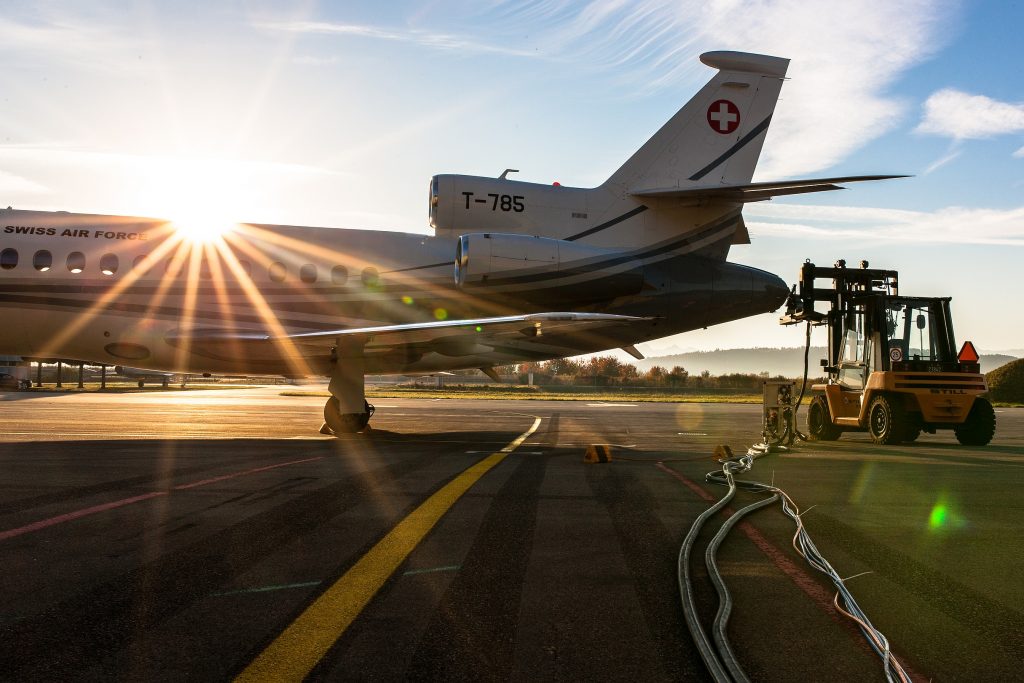Navigation menu
- Education
- Emissions & Air Quality
- Infrastructure & Services
- Meteorology & Climate
- News
- Physical Chemistry
- Projects
Particle emissions of small turbine engines are unknown and unregulated
Jet engines for commercial airliners in production now and in the future are certified for particle emissions from a virtual landing and take-off cycle. However, one potentially large group of engines is left out. Small jet engines (<26.7 kN rated thrust), found on business jets, as well as other types of turbine engines used in helicopters and propeller-powered aircraft have only to pass an old-fashioned exhaust smoke visibility test. Although these unregulated engines burn a small fraction of the world’s jet fuel, there are concerns about their contribution to local air pollution. Small turbine engines have therefore appeared in the spotlight of regulatory agencies and researchers. Unlike the grounded commercial fleet, private jet traffic has been resilient and increasing in many places in the second half of 2020.
Swiss “Air Force One” underwent an emissions test using a unique measurement system
To fill the knowledge gap in particle emissions of business jets, together with my colleagues from Empa at the time, we performed an emissions test on the Dassault Falcon 900EX of the Swiss Air Force, a VIP transport plane of the federal government. This modern plane is equipped with engines, which are widely used around the world. The test campaign was possible thanks to the Swiss Air Force’s support and coordination by Mr. Theo Rindlisbacher from the Swiss Federal Office of Civil Aviation (FOCA). This campaign marked the first deployment of the Swiss Mobile Aircraft Emissions Measurement System (SMARTEMIS). SMARTEMIS is one of the three reference systems in the world for measuring nonvolatile particulate matter emissions. For the emission tests, a forklift held a custom-built exhaust probe right behind the center engine. With the brakes applied, the pilot put the engine through a test cycle from maximum power down to idle several times. The exhaust sample was transported via heated lines to the instruments placed more than 25 meters away inside a hangar.

Small plane – low emissions?
The jet engine on the Falcon 900 burns approximately 20% of the fuel needed by a Boeing 737 engine; thus, one can expect the overall pollutant emissions to be proportionally lower. However, for the standard LTO cycle and per aircraft, the small Falcon 900 emitted more particles, both in terms of mass and number, than a Boeing 737. Most importantly, for health effects, the highest number of particles was emitted at low power applied for ground movements. Since aircraft are designed to spend most of the time in the air and not on the ground, I developed an engine performance model to correct the ground test data to estimate the particle emissions during the flight. The estimated particle emissions per flight hour at cruise altitude were found to be in the range found previously for large commercial aircraft.
More work underway to get the bigger picture
This study reports the first nvPM emissions for a business jet engine measured using the standardized methodology. Since only one aircraft type was measured, one should not extrapolate the results to the entire fleet (as some modelers are often tempted to do so). Since the Falcon 900 tests, SMARTEMIS has been deployed behind another business jet, and more tests are planned in Switzerland and abroad. We have been also improving our models for correcting ground measurements to cruise.
Reference
Durdina, L., Brem, B. T., Schönenberger, D., Siegerist, F., Anet, J. G., & Rindlisbacher, T. (2019). Nonvolatile Particulate Matter Emissions of a Business Jet Measured at Ground Level and Estimated for Cruising Altitudes. Environmental Science and Technology, 53(21), 12865–12872. https://doi.org/10.1021/acs.est.9b02513